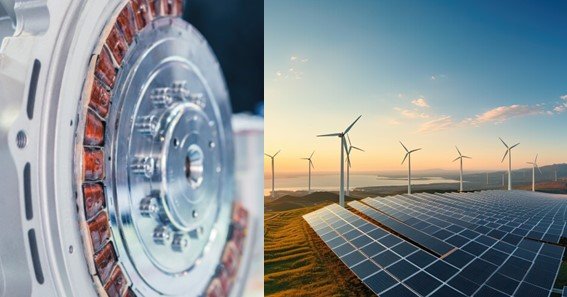Magnets are vital in the quest for clean energy, although they aren’t a direct source of energy. Instead, magnets play a crucial role in converting various forms of energy into electricity, particularly in renewable energy technologies and cutting-edge fusion research.
The Role of Magnets in Clean Energy
While magnets themselves don’t produce energy, they are indispensable in the generation and transformation of energy. Here’s how:
- Energy Conversion in Generators: Magnets are central to the operation of most electric generators, whether they are powered by fossil fuels, wind, or hydroelectric sources. In these systems, spinning turbines move magnets past coils of wire, inducing an electric current. This process is fundamental to nearly all electricity generation except for photovoltaics (solar power).
- Fusion Energy: In the pursuit of fusion energy—often dubbed the “holy grail” of clean energy—magnets are essential. High-temperature superconducting magnets are used to contain and control plasma within tokamaks, devices designed to replicate the energy-producing processes of the sun. These magnets help improve the efficiency and feasibility of fusion reactors, potentially providing an almost limitless source of clean energy in the future.
- Magnetic Fields in Catalysis: Recent research has shown that magnetic fields can enhance the efficiency of electrocatalysis, a process crucial for sustainable fuel production. By influencing the movement of reactants, magnetic fields can significantly boost the production of green hydrogen, a promising clean fuel.
- Rare Earth-Free Magnets: Innovations like the Clean Earth Magnet, which eliminates the need for environmentally damaging rare-earth materials, are also pushing the boundaries of sustainable energy technology. These magnets are already being integrated into electric vehicles, wind turbines, and other clean technologies, reducing the environmental impact while enhancing performance.

FAQ
- Can magnets generate clean energy on their own?
No, magnets can’t generate energy by themselves, but they are crucial in converting mechanical energy into electricity in most power generation systems. - How do magnets contribute to renewable energy?
Magnets are essential in wind turbines and hydroelectric generators, where they help convert kinetic energy into electrical energy efficiently. - What is the role of magnets in fusion energy?
Magnets are used to contain and stabilize plasma in fusion reactors, which are being developed to provide a nearly limitless and clean source of energy. - Are there sustainable alternatives to rare-earth magnets?
Yes, innovations like the Clean Earth Magnet, which uses iron and nitrogen instead of rare-earth elements, are providing sustainable alternatives with lower environmental impact. - Can magnetic fields improve other clean energy technologies?
Yes, magnetic fields can enhance electrocatalysis processes, improving the efficiency of green hydrogen production, which is vital for clean energy storage and fuel.










